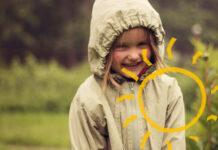Advent
Despite the fact that just like in other Nordic countries, the most important days are Christmas Eve and Christmas, the festive atmosphere can be felt right from the beginning of December – at the start of Advent. Advent calendars are bought and they are used to measure the time left until the holidays. Another tradition connected with waiting for Christmas is the lighting of Advent candles. At that time children hang a sock on the window, and elves bring them gifts each day – sweets, toys and sometimes books.
On the Feast of St. Thomas (December 21st) Christmas tree is decorated and put in a place of honor. Rooms are also decorated. Traditionally Estonian Christmas trees are decorated with lights and other ornaments, and they remain as such until the Feast of Three Kings (January 6th).
In comparison with other Estonian Christmas traditions the custom of decorating the Christmas tree is rather new as it was only adopted from a German tradition somewhere in the middle of the XIX century. In cities the custom of decorating the Christmas tree in the home was adopted by Estonians, from the local German populace. This tradition was spread among villagers by the Baltic-German aristocracy. Its members organized special Christmas gatherings in their manor houses during which they gave gifts to their serfs and their children. Soon the custom of having Christmas trees in schools, churches, and peasant houses (along with Christmas straw) became very popular. Evergreen fir was always chosen as a Christmas tree, and only in some regions, where this tree was not present (e.g. the island of Kihnu) fir was replaced with a pine. The tree was decorated in a very simple way with primitive toys and sweets and later candles were lit.
Among Catholics there is a tradition of preparing Christmas cradles.
Jőululaupäev – Christmas Eve
On Christmas Eve Estonians always go to mass. Before leaving for mass there was a tradition of bathing in the sauna. The tradition of taking a steam bath was common throughout the country. This was also done during the day of summer solstice. In the past children were given clothes so that they could look festive during the evening mass. After returning from church, a large table awaited them, on which there was food and a lit candle. There was also additional tableware which symbolized the longing for relatives who were away or who have departed forever.
On Christmas Eve gifts appear under the tree, which are placed there unnoticed by Jőuluvana – St. Nicholas (the tradition of St. Nicholas bringing gifts is fairly new but it has already been adopted for good). St. Nicholas comes to Estonia from Lapland on a large sled, with a huge bag full of gifts, drawn by reindeer. Gifts are opened right after Christmas Eve dinner. Children as well as adults must sing a song, say a poem, or dance in order to receive their gift. Another tradition in Estonia is that on Christmas Eve fireworks light up the sky.
Christmas Eve is a day full of mystery, wonders, and magic. One of the old stories says that somewhere on the bottom of the sea there is a great kingdom, which just as the ancient Atlantis, was sunk for its sins. The tale says that when a ship sails near this place during Christmas Eve sailors can hear the tolling of the sunken mourning bell. It is the same sound that we can hear from the bell towers of churches on land.
Jőulud – Christmas
On the 24th of December each year, the president of Estonia declares Christmas a time of peace and takes part in a ceremonial service. This custom has a 350-year old tradition and was first declared in the XVIII century by the decree of the Swedish queen – Chrisitne.
From Christmas Day until the Feast of the Three Kings young people visit houses dressed up as different figures – just as carolers in Poland do. Dressed in sheepskins turned inside-out they wish the whole family all the best. In return they receive small gifts.
In earlier times a very popular tradition in Estonia was the making of special Christmas crowns which were supposed to imitate church candlesticks (or it was a tradition connected with the Feast of the Three Kings). This custom probably came from western and southern Finland where it was very popular among the local Swedish speaking populace, especially that which inhabited the island Vormsi. They kept close ties with their relatives in Finland and Sweden. This tradition disappeared at the beginning of the XX century and was replaced with other Christmas symbols. In the 1970’s it resurfaced and became very popular once again.
Translator: Szczepan Witaszek









